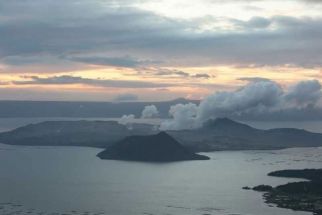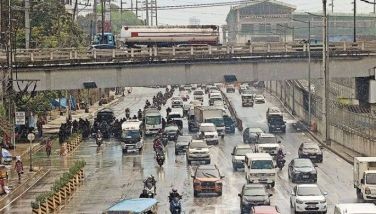Philippine population density up 32% in past 15 years
MANILA, Philippines - Population density in the Philippines – the number of people residing per square kilometer of land – has risen by 32 percent in the past 15 years, the Philippine Statistics Authority (PSA) reported yesterday.
Using a population count of 100.98 million people as of the August 2015 census, Philippine population density was seen to have risen to an average of 337 persons per square kilometer from 255 per sq. km. in 2000. This was a 9.4 percent increase from the population density of 308 persons per sq. km. in 2010.
Metro Manila remains the most densely populated among the country’s 18 administrative regions with a population density of 19,988 persons living per sq. km. of land, 60 times higher than the density at the national level.
This was higher by 8.6 percent from the density of 18,402 persons per sq. km. in 2010 and by 30 percent from 15,417 persons in 2000.
On the other hand, the most sparsely populated region in the country as of 2015 is the Cordillera Administrative Region (CAR) with 84 persons living per sq. km. of land.
Among cities, Manila is the most densely populated with 42,628 persons per sq. km. in 2015.
Equally congested are the cities of Mandaluyong and Caloocan with 41,580 persons and 28,387 persons per sq. km., respectively.
Other cities in Metro Manila also surpassed the regional population density. These were: Makati (27,010 persons per sq. km.), Malabon (23,267), Pasay (23,038), Navotas (22,845) and San Juan (21,102).
The municipality of Pateros was the least densely populated city in the region with 6,138 persons per sq. km. of land.
Among the country’s 81 provinces, Cavite was the most densely populated while Apayao was the most sparsely populated.
In Cavite, 2,455 persons reside per sq. km. of land. The population density is almost the same in the provinces of Rizal with 2,311, Laguna with 1,567, Pampanga (excluding Angeles City) with 1,111 and Bulacan with 1,107 persons per sq. km.
In contrast, Apayao had the least density level of 26 persons per sq. km. Other provinces with thin distribution of residents were Abra with 56, Palawan (excluding Puerto Princesa City) with 58, Mountain Province with 59 and Kalinga with 61 persons per sq. km.
Among highly urbanized cities outside of Metro Manila, Mandaue City was the most densely populated with 14,402 persons living per sq. km. of land. Others with similar distribution of population were: Lapu-Lapu City with 7,024 persons per sq. km. and Angeles City with 6,496; Baguio City with 6,004 and Iloilo City with 5,719.
Puerto Princesa City, on the other hand, was the most sparsely populated outside Metro Manila with 107 persons living per sq. km. of land.
The measurement of population density is particularly important in monitoring human settlement conditions and trends, particularly in densely populated urban areas.
- Latest
- Trending




























